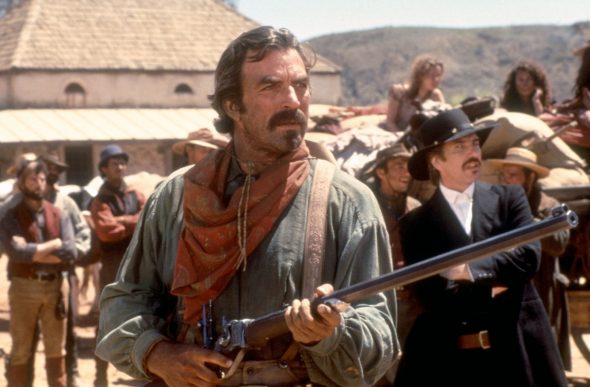Many shooters struggle with their carry iron. If you have taken a CCW class or competed in USPSA, or even shot with friends… I don’t need to tell you how many people struggle with their pistols.
In all likelihood, if the USA doesn’t turn into a hellish nightmare scape of civil war, your pistol is the most likely tool you will use to defend life and limb. Taking your AR15 to Walmart is frowned upon though legal in many states. Your pistol… is always with you.
So when I think of a pistol shooter, I am reminded of my struggles as a novice pistolero. You didn’t have good instructions and certainly no good YouTube when I was a teen. So in order to help you improve, I am going to break down the most important components of solid pistol shooting
It’s in the Grip:
Poor grip means poor muzzle and recoil control. Your wrist is an amazing piece of anatomy… it’s comprised of many bones that allow the hand to flex, extend, and pivot in numerous directions. The pistol, on the other hand, wants to move as well. As the pistol recoils, it wants to move straight back, but your wrist is not fixed on the vertical axis.
Pretend for a second you are holding a magnum revolver and shooting one-handed. Let it pretend recoil and move your wrist up moving the hand and imaginary gun up too. As your first moves vertical at some point your radius and ulna also become engaged in this movement and suddenly your hand and imaginary magnum are now pointing up and to the right (if right-handed). It’s simply a fact of anatomy… your hand isn’t a vice and your wrist will let recoil move the pistol where it wants to move.
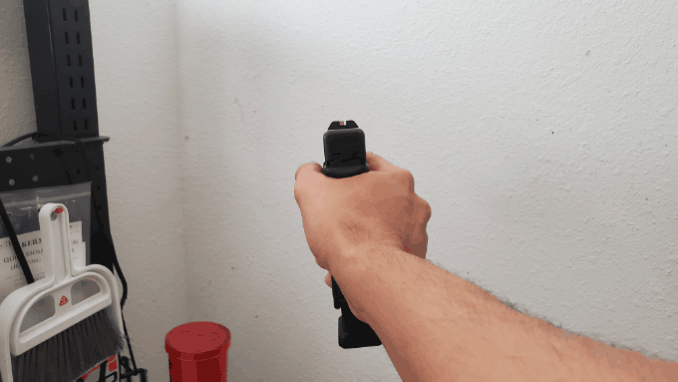
The wrist allows verticle muzzle to rise initially, but as the extension continues, the wrist, radius, and ulna rotate and the muzzle winds up pointing up and to the right.
When we factor in two hands, we can now add both strength to the grip and limit the movement of the wrists to a consistent and repeatable manner.
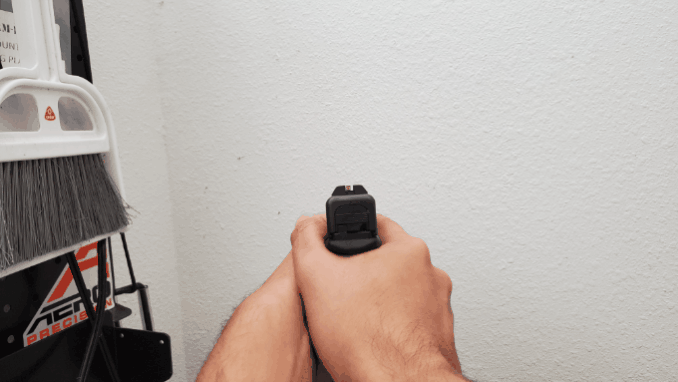
When both hands properly grip the pistol, the up and lateral movement of the wrists is eliminated.
If the hands are cupped around each other then the up and away movement of the wrists is eliminated as each wrist will oppose that movement due to the hands being locked together… Same case if wrapped around a pistol grip.
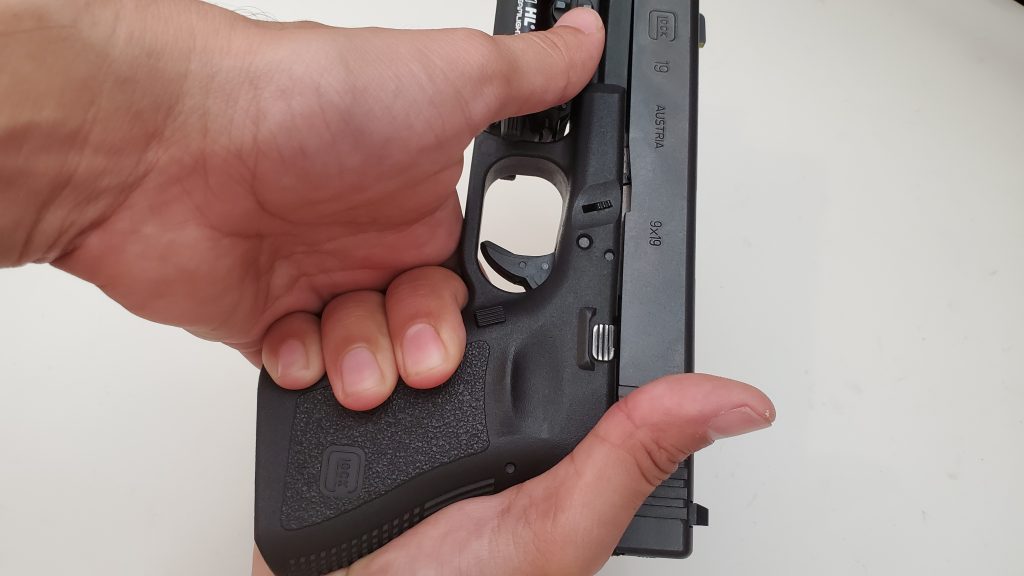
A propper wrapped grip begins with overlapping fingers
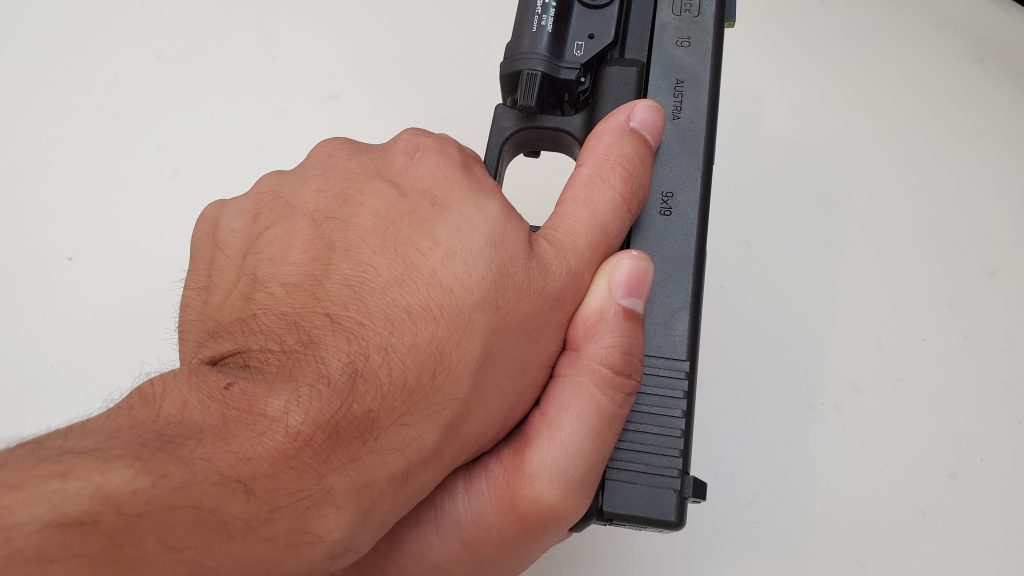
The palm then engaging the pistol grip
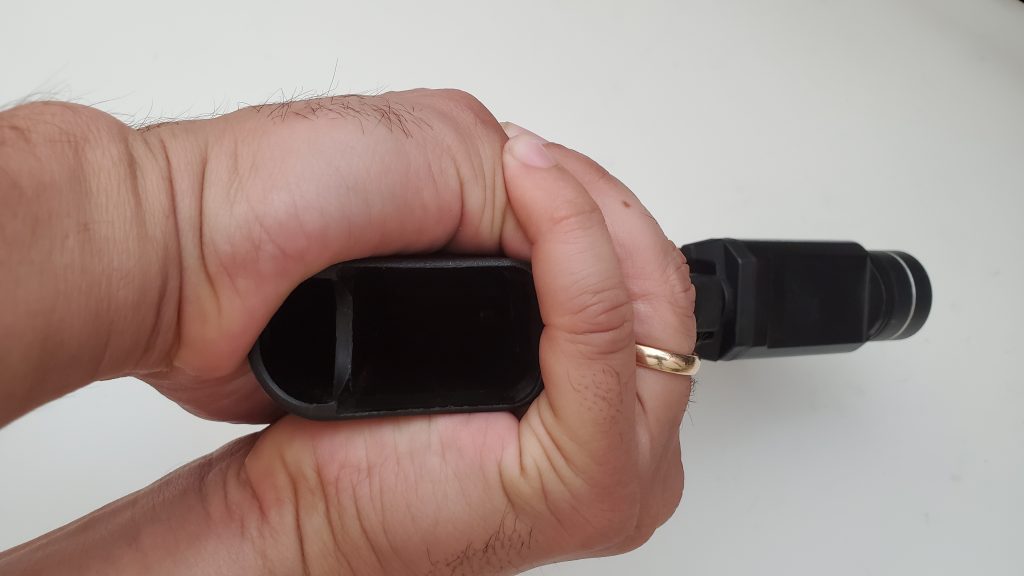
From below: A complete wrap of the pistol.
The movement of the hands and wrist are then locked into an almost perfect horizontal line as you move them up and down. This is in stark contrast to the teacup hold which permits the wrist of the firing hand to move up and to the right as no opposing force is available to stop the rotation of the wrist and rotation of the radius and ulna.
The question of grip is also punctuated by how hard should one grasp the grip? First off, if we are gripping the pistol properly with the dominant hand behind wrapped by the off-hand, we must apply pressure to ensure the pistol does not break contact with our hand. The proper amount of pressure is simply enough that the pistols grip mold and patterns are impressed into your hand when you let go of the pistol.
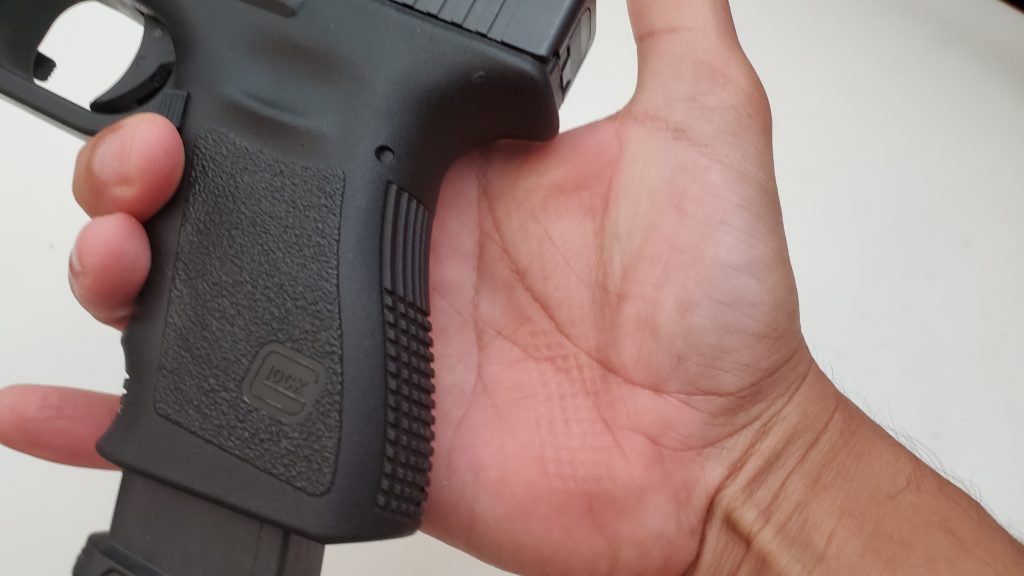
A firm grip imprints the pattern of the pistol on to the shooter’s hand.
The backstrap of the Glock, for example, is full of small bumps… A good, firm grip will impress those bumps and ridges into the shooter’s hand.
With a firm, properly wrapped grip… Your first step towards good pistol shooting is underway because control is the precursor to confidence. To be confident in your weapon you must feel in control.
The Trigger is your Best Friend:
I always hated “pull the trigger until the gun goes off (as a surprise). I remember my first pistol instructor had me grip the pistol with ONLY my thumb and pointer finger while my non-dominant pointer pulled the trigger slowly to the rear. I was only focused on sight alignment. All my mental energy was on sight alignment as that trigger agonizingly moved to the rear and Surprise! the gun went off and I hit a dead X bullseye. What he was attempting to show me was that only the alignment of the gun and squeezing the trigger mattered as the bullet would leave the bore before any flinch or other factor affected the gun. Bravo, point taken… But you can’t become confident if your pistol bucks and shifts because of a bad grip, and you can’t become fast on the sights if they drift off to a new direction each shot. Finally… A gun Surprise! Ing you is not confidence-inspiring. No. Shooters who are surprised can develop flinching or dip the pistol.
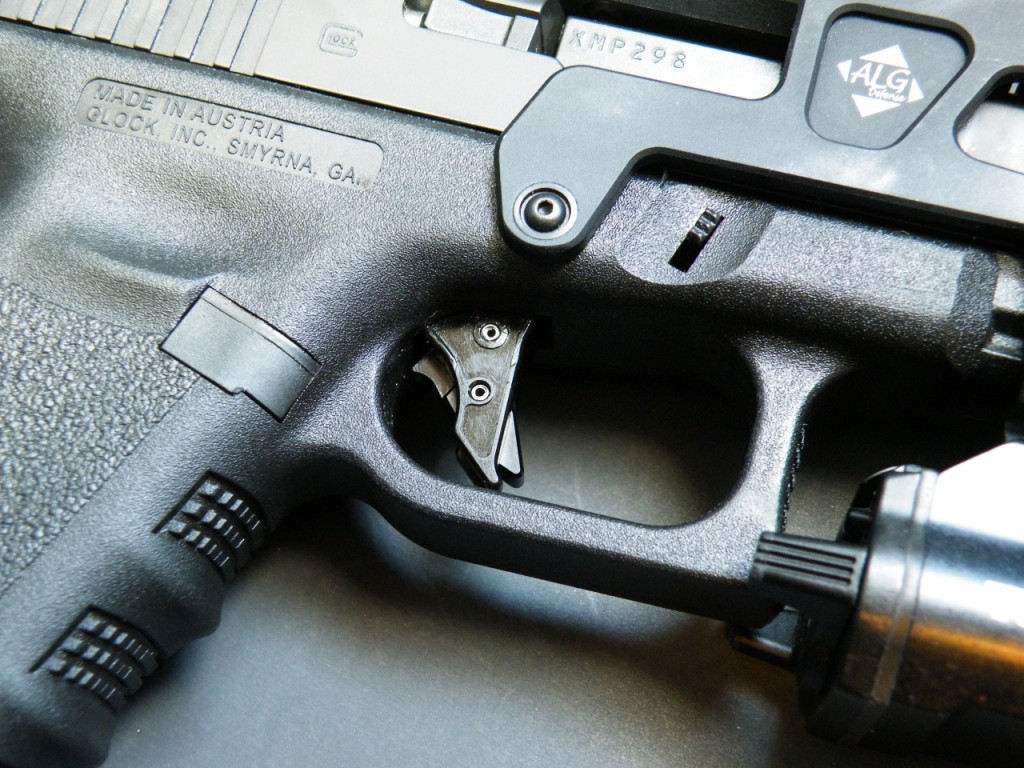
Dry fire until you know when the trigger breaks
Instead, dry fire that trigger until you are 100 percent in command of the pistol when you pull the trigger. You want to know 100 percent what that trigger feels like as it breaks. This is a confidence builder. When you have control of the feel of the trigger, and command *when* it fires, you have further extended your mental and physical control over the pistol. Good shooters don’t have a flinch because they aren’t surprised by the pistol. They are in command of it.
What You See:
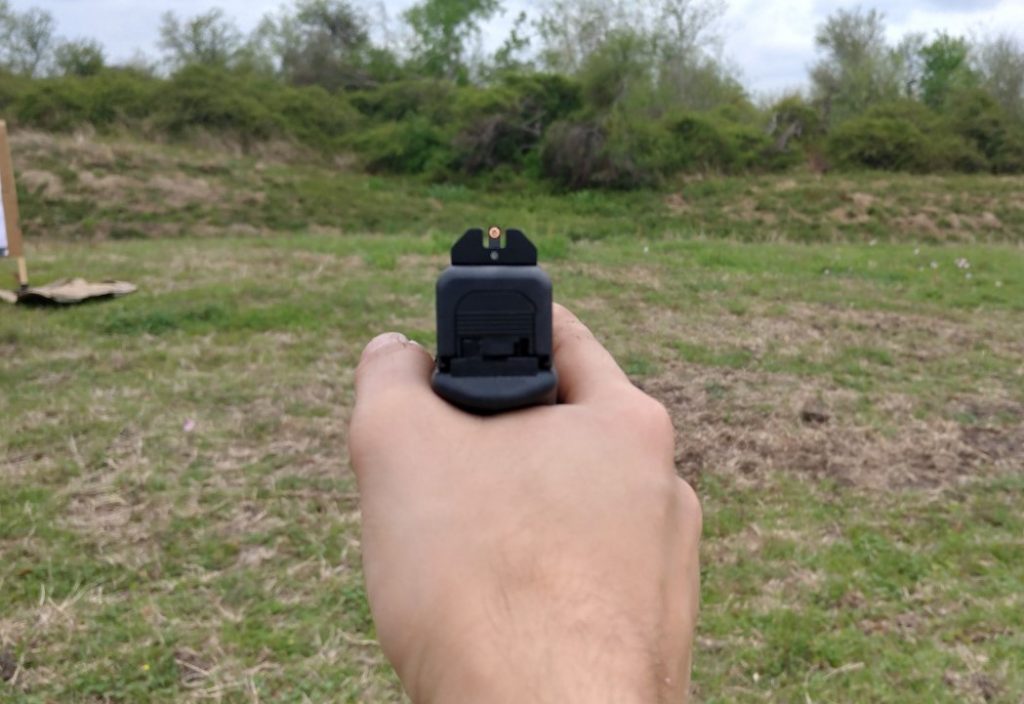
As best an example I could get, equal height, equal light, focus on front sight.
In the age of RMRs and pistol dots… I must say I still haven’t gotten on the bandwagon. I have tried it, yes… but at this point my budgetary concerns are elsewhere. Let’s talk about factory pistol sights. This is a place of mental focus. You are simply aligning the front sight in the rear notch, with all your mental energy focused on the front sight. The target will be lightly fuzzy. Your focus on the front sight is simply to ensure it remains aligned within the rear notch… with equal height, and equal light. When your visual and mental focus is here, hits come easy as your grip is solid, and your trigger finger commands the gun to fire when you want it to. So long as the sights are aligned you will get solid hits at typical defensive ranges. Your job now is to track the sights through recoil. A good grip will not allow the pistol to slip, and there will be no need to shift your hands to re-grasp the gun. A solid grip anchors the pistol in your hand and allows the sights to go up with recoil and fall straight back down into your visual field.
Wrapping Up:
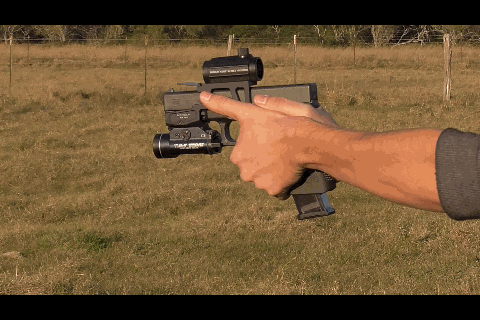
I hope I made some points easy to understand. Using the internet to teach you to shoot a pistol is not ideal. If possible, find quality instruction or go to a USPSA match when you have adequate confidence in your ability to maintain safe muzzle discipline and confidence with the basics. They, your fellow Americans, will help you and coach you as a new shooter. They want you to succeed. Remember, grip, trigger, irons… and if you haven’t seen Quigley Down Under, do it. It’s an essential part of your pistol training.
Lothaen Out.





